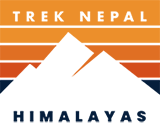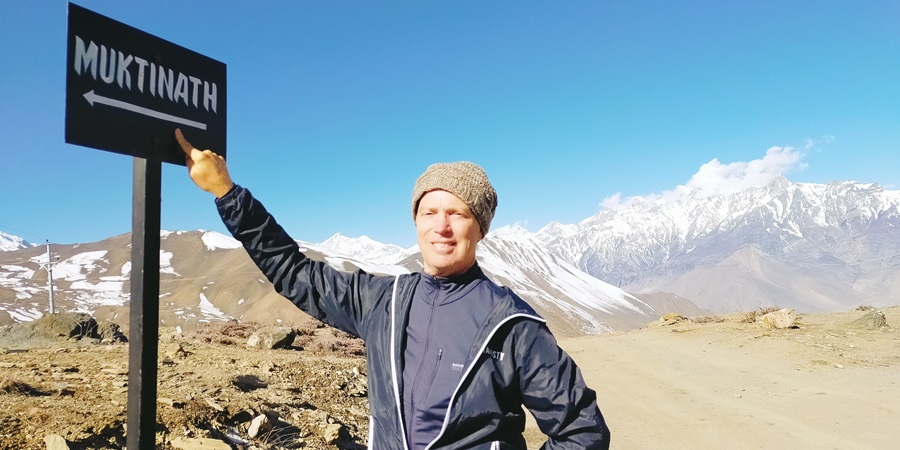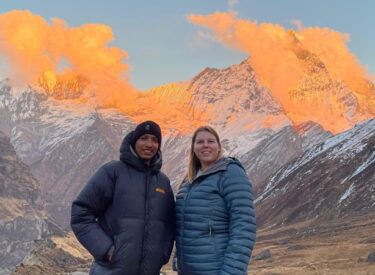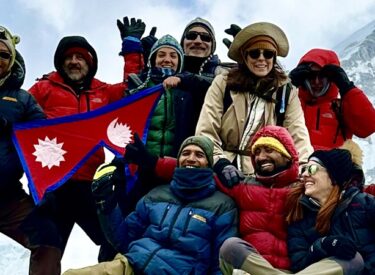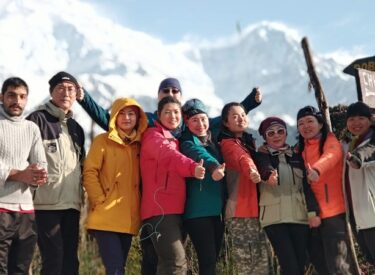Annapurna Circuit Trek
based on 152 reviewsOverview of Annapurna Circuit Trek
Your Gateway to the Himalayas
Are you ready for the trek of a lifetime? The Annapurna Circuit Trek is not just a trek; it’s a high-altitude expedition and one of Nepal’s most popular trekking experiences. This guide is your go-to resource for making your Annapurna Circuit adventure unforgettable.
Why Choose the Annapurna Circuit Trek?
Discover Nepal’s Natural Wonders: The Annapurna Circuit is famous for its diverse landscapes, from lush mountains to the stark, deserted terrains of the Lower Mustang area of Nepal. Imagine walking through terraced fields, alpine forests, and arid plateaus—all in one trek!
Conquer the Majestic Thorong La Pass
A Feat for the Adventurous: At an elevation of 5,416 meters, Thorong La Pass is one of the highest trekking passes in the Himalayas. Conquering this pass adds an adrenaline-pumping challenge to your Annapurna Circuit Trekking experience. The views from the top? Breathtaking!
Annapurna vs. Everest Base Camp Trek
Two Giants of Nepal: While the Everest Base Camp has its unique allure, the Annapurna Circuit is equally famous and offers diverse experiences. From lush forests to barren landscapes, the Annapurna Circuit has it all, making it a must-try for any trekking enthusiast.
Spiritual Significance: Muktinath Temple
A Journey for the Soul: Add a touch of spirituality to your trekking in Nepal adventure. The Annapurna trail includes visiting the famous Muktinath Temple, a sacred site revered by Hindus and Buddhists.
The Perfect Circuit: Annapurna Circuit Route
A Whirlwind Tour of Nepal’s Best: The Annapurna Circuit Trek starts from Besisahar and takes you through a whirlwind tour of Nepal’s best. You’ll pass through Manang, conquer Thorong La Pass, pay respects at Muktinath Temple, taste apples in Marpha village, relax in Beni Hot Spring, and catch the sunrise at Ghorepani and Poon Hill before winding down in the lakeside city of Pokhara.
Annapurna Circuit Trekking: A Journey of Elevations
From Valleys to Peaks: The Annapurna Circuit isn’t just a trek; it’s a rollercoaster of elevations. Starting at a humble 820 meters, you’ll ascend to the dizzying heights of 5,416 at Thorong La Pass before returning to a more breathable 800 meters.
Additional Highlights: More Than Just a Trek
Capture the Moments: The Annapurna trek route includes the world’s deepest gorge, the Kali Gandaki Gorge, and Poon Hill, the ultimate viewpoint for a Himalayan sunrise. Trust us; you’ll want to have your camera ready for these!
Itinerary of Annapurna Circuit Trek
As you arrive in Kathmandu, the heart of Nepal, you’ll be greeted by the city’s vibrant energy. Our team will transfer you to your hotel, where you’ll have time to rest and prepare for the Annapurna Circuit trekking adventure ahead.
Begin your Annapurna Circuit trek adventure with a picturesque bus journey from Kathmandu to Bulbule. En route, catch glimpses of terraced fields, charming villages, and the ever-present Himalayan backdrop. Spend the night in Bulbule, surrounded by the tranquillity of nature at an elevation of 840 meters.
Step onto the trail and immerse yourself in the diverse landscapes as you trek from Bulbule to Jagat during your Annapurna Circuit adventure. Crossing suspension bridges and passing through quaint villages, you’ll feel the pulse of the mountains.
The trail continues, leading you through lush forests and along rocky paths as part of your Annapurna Circuit trekking journey—Trek from Jagat to Dharapani, where the towering peaks create a breathtaking backdrop. As you ascend, the air becomes crisper, and the anticipation grows.
Today’s journey takes you deeper into the heart of the Himalayas during your Annapurna Circuit adventure—Trek from Dharapani to Chame, where the diverse landscapes showcase the region’s allure. As you ascend, the majestic peaks of the Annapurna range draw closer.
Feel the elevation as you trek from Chame to Pisang, where the Himalayas seem to embrace you during your Annapurna Circuit trek. The crisp mountain air and the dramatic views testify to the region’s magnificence.
During your Annapurna Circuit adventure, embark on a remarkable journey from Pisang to Manang via Upper Pisang. The trail offers stunning landscapes and insights into the local culture. Arrive in Manang at 3540 meters and explore the charming village and its unique way of life.
Take a day to acclimatize and explore the captivating surroundings of Manang during your Annapurna Circuit trekking experience. The turquoise waters of Gangapurna Lake and the panoramic views of the Himalayas create a tranquil backdrop for your rest day.
Resume your trek with renewed energy as you make your way from Manang to Ledar during your Annapurna Circuit adventure. With every step, you’ll feel the anticipation of reaching higher altitudes. Arrive in Ledar at 4200 meters, surrounded by the rugged beauty of the mountains.
The journey to Thorang Phedi takes you closer to the renowned Thorang La Pass, a pivotal point of your Annapurna Circuit trek. The trail is both thrilling and awe-inspiring as you ascend to 4420 meters. The excitement of the upcoming pass is palpable in the air.
Today’s trek tests your determination and perseverance during your Annapurna Circuit trekking—Trek from High Camp to Muktinath via the legendary Thorang La Pass at an astonishing 5416 meters. As you conquer the past, the sense of achievement and the panoramic views will leave you in awe.
Descend from the heights of Muktinath to the tranquil town of Jomsom during your Annapurna Circuit trekking journey. The lower altitude offers a refreshing change of scenery, and the warmth of the local community will greet you. Arrive in Jomsom at 2720 meters and soak in the peaceful atmosphere.
Experience the diversity of landscapes as you trek from Jomsom to Kalopani during your Annapurna Circuit trip. The trail showcases Nepal’s remarkable contrasts, from the arid Mustang region to the lush forests. Reach Kalopani at 2530 meters and witness the unique beauty of the area.
Today’s trek takes you to Tatopani, known for its natural hot springs, a perfect reward for your Annapurna Circuit trek. After days of trekking, indulge in the warmth of the springs and let your tired muscles relax.
Continue trek through picturesque landscapes from Tatopani to Shikha, enhancing your Annapurna Circuit hike. The trail weaves through terraced fields, charming villages, and lush forests, offering glimpses of local life.
As you trek from Shikha to Ghorepani, you’ll be captivated by the gradual change in scenery during your Annapurna Circuit trekking experience. The trail leads you to the famed vantage point of Poon Hill, where you’ll witness the sunrise painting the Himalayas with hues of gold.
Begin your day with an early morning hike to Poon Hill for a sunrise view that paints the mountains with hues of gold. After soaking in the beauty, descend to Ghorepani, have breakfast, and continue your trek to Hile at 1475 meters.
Conclude your trek with a final stretch from Hile to Nayapul. From Nayapul, private transport will take you to Pokhara, where the serene lakeside city welcomes you.
As you travel back to Kathmandu by tourist bus, take the time to reflect on the incredible journey you’ve undertaken. The memories, the friendships, and the landscapes will stay with you forever.
Bid farewell to Nepal and depart from the international airport. Alternatively, if you have a few extra days, immerse yourself in the charm of Kathmandu, indulge in shopping, explore historical sites, or relish the vibrant atmosphere.
Added Insights
Includes/Excludes
What's Included?
- Transportation by tourist bus
- 3-star hotel in Pokhara with breakfast
- Private transportation from Nayapul
- All the needed documents/permits for the trekking
- Experienced English speaking trekking guide and his all expenses including insurance
- Porters for carrying bags (1 porter for 2 trekkers and carries 15kg-20kg) and their all expenses including insurance
- Three meals (Breakfast, Lunch and Dinner) during the trekking
- Teahouse accommodation during the trek
- Sleeping bags and down jackets (Need to return after the trekking)
- Walking poles
- Nepali Sim Cards
- First Aid Kit
What's Excluded?
- Nepalese visa fee
- International airfare to and from Kathmandu
- Travel insurance
- Excess baggage charges
- Lunch and dinner in Pokhara
- Extra night accommodation in Pokhara in case of early arrival, late departure, and early return from the trekking
- Personal expenses (phone calls, laundry, bar bills, battery recharge, extra porters, bottle or boiled water, shower, etc.)
- Tips for guide(s), porter(s) and driver(s)
- Anything does not mention in include list
Embarking on the Annapurna Circuit Trek: Your Ultimate Guide
Best Seasons for the Annapurna Circuit Trek: A Month-by-Month Guide
Spring (March to May)
The Season of Blossoms: Spring is one of the most popular seasons for the Annapurna Circuit Trek. The weather is generally stable, with temperatures ranging from 10°C to 20°C. The trails are adorned with blooming rhododendrons and other flora, making for a picturesque trekking experience.
Summer (June to August)
Monsoon Adventures: While not the most recommended season due to heavy rainfall and potential landslides, the Annapurna Circuit is still doable for those up for an adventure. Temperatures range from 15°C to 25°C. This might be your season if you’re an experienced trekker looking for a less crowded experience.
Autumn (September to November)
Clear Skies and Crisp Air: Autumn is another excellent season for trekking in Nepal, particularly for the Annapurna Circuit Trek. The clear skies offer stunning views of the Annapurna and Dhaulagiri mountain ranges. Temperatures are moderate, ranging from 10°C to 20°C, making for a comfortable trek.
Winter (December to February)
For the Brave Hearts: Winter trekking presents challenges, such as colder temperatures ranging from -5°C to 10°C and occasional snowfall. However, the Annapurna Circuit Trek remains accessible. The trails are less crowded, offering a more solitary experience for those brave enough to face the cold.
Hassle-Free Permits with Trek Nepal Himalayas Pvt Ltd: ACAP and TIMS Included
Annapurna Conservation Area Permit (ACAP)
Your Ticket to Annapurna’s Wonders: The ACAP permit is essential for trekking in the Annapurna region. This permit supports the area’s conservation efforts and is a mandatory requirement. When you book your Annapurna Circuit Trek with Trek Nepal Himalayas Pvt Ltd, this permit is included in your package.
Trekkers’ Information Management System (TIMS)
Safety First, Always: The TIMS permit is another crucial document for trekking in Nepal. It helps local authorities keep track of trekkers and ensures your safety. This permit is also included in your package when you book with Trek Nepal Himalayas Pvt Ltd.
Why Choose Trek Nepal Himalayas Pvt Ltd?
All-Inclusive Packages: When you book your Annapurna Circuit Trek with us, both the ACAP and TIMS permits are included in your package. This makes your trekking experience hassle-free and lets you focus on the adventure ahead.
How Does It Work?
Seamless Experience: Trek Nepal Himalayas Pvt Ltd handles all the permit arrangements once you book your trek. You only need to provide us with the necessary documents, and we take the rest.
Accommodations on the Annapurna Circuit Trek
What is a Teahouse?
Your Himalayan Home: A teahouse is a local lodge that offers accommodations and meals. These establishments are the backbone of trekking in Nepal, providing trekkers with a warm bed and hot meals in the remote regions of the Himalayas.
Quality and Comfort
Rest Assured: When you book your Annapurna Circuit Trek with Trek Nepal Himalayas Pvt Ltd, you can expect to stay in quality teahouses with good amenities. From clean beds to hot showers, these teahouses are designed to make your trekking experience as comfortable as possible.
Food and Dining
Local Flavors and International Favorites: Teahouses along the Annapurna Circuit route offer various food options, from traditional Nepali dishes to international cuisine. You’ll find something to satisfy your palate, whether you’re craving Dal Bhat or pasta.
Food Options During the Annapurna Circuit Trek
Local Delicacies
Taste of Nepal: One of the highlights of trekking in Nepal is the local cuisine. Teahouses along the Annapurna Circuit offer traditional Nepali dishes like Dal Bhat, a hearty meal of lentil soup, rice, and vegetables. It’s a must-try for anyone looking to immerse themselves in Nepali culture.
International Cuisine
Familiar Flavors: If you’re craving something familiar, many teahouses offer international options like pasta, pizza, and even pancakes. This ensures you have various choices to suit your palate during your Annapurna Circuit Trek.
Vegetarian and Vegan Options
Plant-Based Choices: Plenty of plant-based options are available for vegetarians and vegans. You won’t be short on choices from vegetable curries to tofu stir-fries.
Snacks and Beverages
Keep Energized: Besides meals, teahouses offer a selection of snacks like granola bars, fruit, and biscuits. You’ll also find a variety of hot and cold beverages, including herbal teas and coffee, to keep you hydrated and energized.
Drinking Water Options on the Annapurna Circuit Trek
Boiled Water
Pure and Simple: Boiled water is a standard option at teahouses along the Annapurna Circuit Trek route. Boiling is an effective method to purify water, making it safe for drinking. You can also add a slice of lemon or a tea bag for flavour.
Bottled Water
Convenient but Less Eco-Friendly: While bottled water is available for purchase, it’s less eco-friendly and not recommended for sustainable trekking. If you opt for bottled water, consider using it sparingly and try to recycle the bottles whenever possible.
Water Purification Tablets
Portable Protection: You can use water purification tablets to treat tap or natural water for added safety. These tablets are lightweight and easy to carry, providing extra protection against waterborne diseases.
Hot Shower Options on the Annapurna Circuit Trek
Availability at Teahouses
Warmth in the Wilderness: Most teahouses along the Annapurna Circuit Trek route offer hot shower facilities. These showers are usually fueled by solar power or gas, ensuring a steady hot water supply.
A Comforting Experience
Revitalize Your Senses: The availability of hot showers is a welcome luxury, especially after a strenuous day of trekking. It helps you relax and prepares you for the next day’s adventure.
Eco-Friendly Options
Sustainable Comfort: Many teahouses use eco-friendly methods like solar heaters to provide hot water, aligning with the sustainable tourism goals of the region.
Toilet Facilities on the Annapurna Circuit Trek
Indian and Western Toilets at Teahouses
Choice and Comfort: Most Annapurna Circuit Trek route teahouses offer Indian and Western toilet options. These facilities are generally well-maintained, ensuring a comfortable experience for trekkers.
Open-Space Options Enroute
Nature’s Call, Answered: Open-space options are available when trekking through more remote areas like jungles. While not as convenient as teahouse facilities, they offer a solution when you’re away from established rest stops.
Hygiene and Convenience
Clean and Accessible: The availability of different types of toilets ensures you can choose the option you’re most comfortable with, making your trekking experience more enjoyable and stress-free.
Electricity and Wi-Fi on the Annapurna Circuit Trek
Electricity at Teahouses
Power Up: Electricity is available at all teahouses along the Annapurna Circuit Trek route. This means you can charge your devices, use electric lights, and enjoy other amenities that require power.
Wi-Fi Connectivity
Share Your Adventure: Wi-Fi is also widely available at teahouses, allowing you to share your experiences in real time, check emails, or catch up on some light reading online.
Mobile Network Coverage
Stay in Touch: Mobile network coverage is generally good throughout the trek. While there might be some spots with weaker signals, you can usually make calls and use data services without much hassle.
Travel Insurance for the Annapurna Circuit Trek
Why It’s Important
Peace of Mind: Trekking in high-altitude regions like the Annapurna Circuit comes with risks, including altitude sickness, injuries, and unexpected weather changes. Travel insurance provides a safety net, covering medical emergencies, trip cancellations, and lost belongings.
Medical Coverage
Health First: Ensure that your travel insurance policy includes comprehensive medical coverage. This should cover emergency evacuations, hospital stays, and any necessary treatments.
Trip Cancellations and Delays
Plan for the Unexpected: Life is unpredictable, and you may need to cancel or delay your trip. A good travel insurance policy will cover the costs associated with such unforeseen circumstances.
Lost or Stolen Belongings
Protect Your Gear: While the Annapurna Circuit Trek is generally safe, it’s always better to be prepared for the unexpected. Insurance that covers lost or stolen belongings can give you peace of mind during your trek.
Money Management for the Annapurna Circuit Trek
Currency Exchange in Kathmandu
Plan Ahead: Kathmandu offers numerous money exchange services where you can convert your currency into Nepali Rupees. It’s advisable to exchange money before starting your trek, as currency exchange services may not be readily available along the trekking route.
ATMs in Kathmandu
Cash Access: ATMs are widely available in Kathmandu, allowing you to withdraw cash as needed. However, it’s a good idea to carry enough money for the duration of the Annapurna Circuit Trek, as ATMs are unavailable in more remote areas.
Budgeting for the Trek
Plan Wisely: While most expenses like accommodations and permits are often included in trekking packages, carrying extra money for personal expenses like snacks, souvenirs, and tips is wise. Sorting out your finances in Kathmandu before the trek ensures you’re well-prepared for your trekking in Nepal adventure.
FAQs about Annapurna Circuit Trek
Discover the renowned Annapurna Circuit Trek, celebrated for its diverse landscapes, breathtaking mountains, and cultural experiences.
Explore the Annapurna Circuit Trek during spring (March to May) and autumn (September to November) for ideal weather and stunning views.
To trek the Annapurna Circuit, you need the Annapurna Conservation Area Permit (ACAP) and the Trekkers’ Information Management System (TIMS) permit, both included in our packages.
When you book with Trek Nepal Himalayas Pvt Ltd, we handle all permit arrangements for you, ensuring a hassle-free trekking experience.
Experience quality teahouse accommodations along the route, offering comfort and essential amenities to rejuvenate after a day of trekking.
Savour traditional Nepali dishes like Dal Bhat and international favourites at teahouses. Vegetarian and vegan options are also available.
Teahouses offer boiled water, bottled water, and water purification tablets to ensure safe and clean drinking water throughout your journey.
Most teahouses provide hot shower facilities, allowing you to refresh and relax after trekking.
Teahouses offer both Indian and Western toilet options, ensuring comfort and hygiene. Open-space options are available en route for convenience.
Stay connected with Wi-Fi and mobile network coverage available at teahouses. Electricity ensures you can charge devices and use amenities.
Reviews on Annapurna Circuit Trek
Be first to post a review in this trip.
